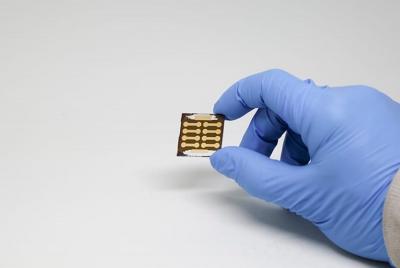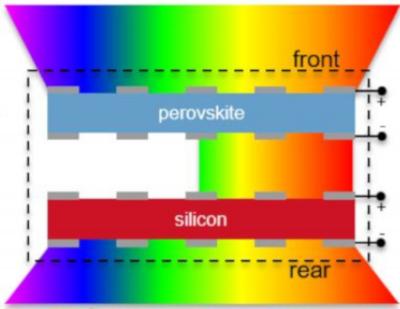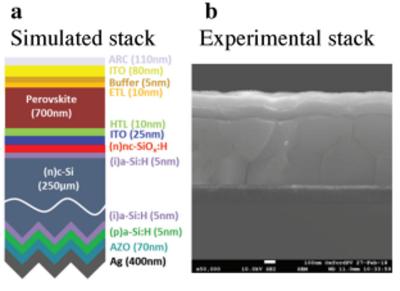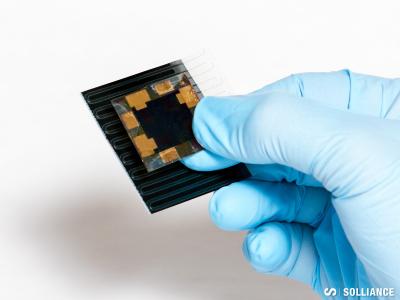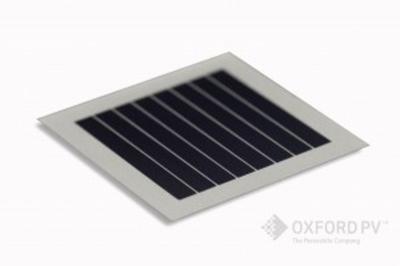Achieving 26.0% efficient monolithic perovskite silicon tandem solar cells and analyzing the performance as a function of photocurrent mismatch
Researchers from Helmholtz-Zentrum Berlin (HZB), Eindhoven University of Technology and Technical University Berlin have combined rear junction silicon heterojunction bottom cells with p'i'n perovskite top cells into highly efficient monolithic tandem solar cells with a power conversion efficiency (PCE) of 26.0%.
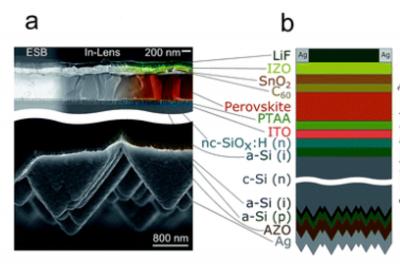 Colored cross sectional SEM image of the top cell (upper panel) and back side of the bottom cell (lower panel) of a typical monolithic tandem solar cell used in this work. (b) schematic device layout of the tandem architecture utilized in this work.
Colored cross sectional SEM image of the top cell (upper panel) and back side of the bottom cell (lower panel) of a typical monolithic tandem solar cell used in this work. (b) schematic device layout of the tandem architecture utilized in this work.
Starting from a certified efficiency of 25.0%, further improvements have been reached by reducing the current mismatch of the certified device. The top contact and perovskite thickness optimization allowed increasing the JSC above 19.5 mA cm'2, enabling a remarkable tandem PCE of 26.0%, however with a slightly limited fill factor (FF).


